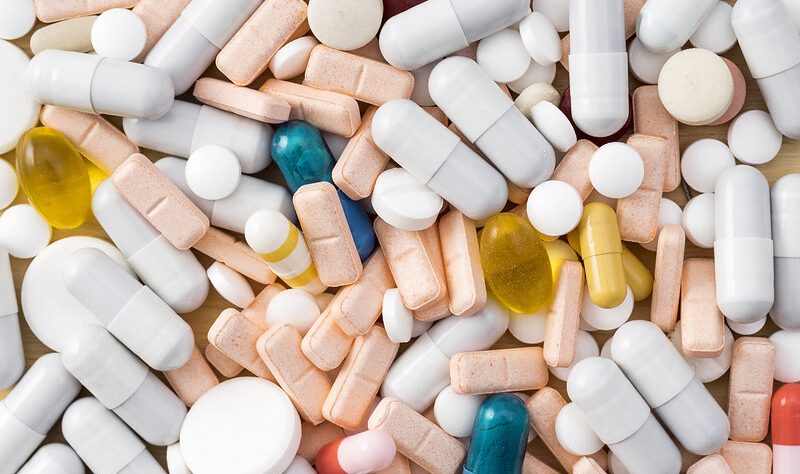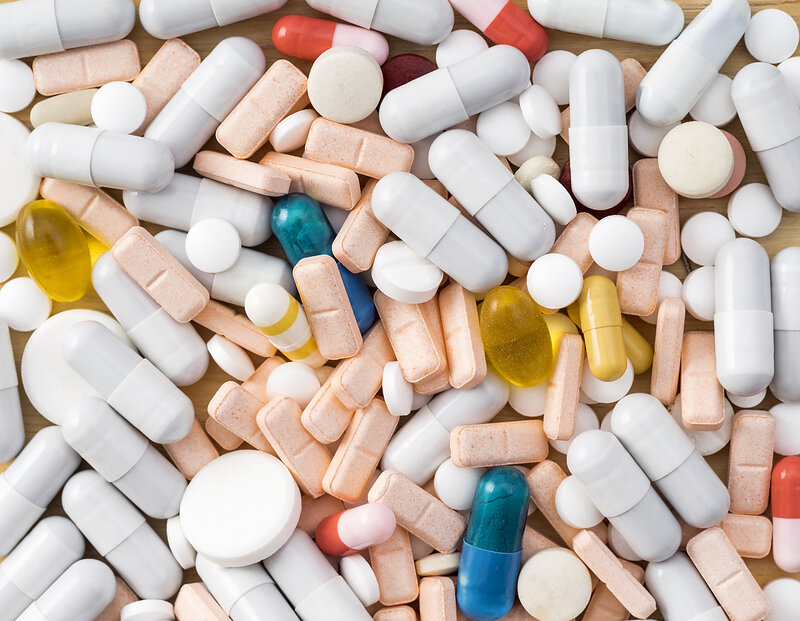Please………………….. Don’t read ……
Dr.Subasini Uthirapathy
Dr. Rozhan Arif 2
Serendipity drug:
The word serendipity itself means a ‘happy accident” or a “pleasant surprise”. These are drugs which were developed for one indication, but later found to be effective in some other disorders.
Examples of drugs discovered by this method
| Drug | Initial use | New use |
| Sildenafil | Pulmonary hypertension | Erectile dysfunction |
| Sulfonylureas | Antibacterial | Oral hypoglycemic agent |
| Allopurinol | Antineoplastic | Antigout |
| Atomoxetine | Antidepressant | ADHD |
| Carbamazepine | Antipsychotic | Antiepileptic |
| Imipramine | Sedative | Antidepressant |
| Chlorpromazine | Antihelminthic | Antipsychotic |
| Disulfiram | Antihelminthic | Alcohol dependence |
| Raloxifene | Contraceptive | Osteoporosis |
| Gapapentin | Antiepileptic | Peripheral neuropathy |
| Bremelanotide | Tanning cream | Erectile dysfunction |
Side effect: It is an undesired effect, which is other than therapeutic one.
Toxic effect: It is an exaggeration of the effect that produces the therapeutic one.
Teratogenicity: Teratogenicity is the ability of a drug to induce gross structural malformation during fetal development.
Mutagenicity: Drug or reactive metabolites of drug induced direct damage to DNA can cause mutagenesis.
Biovigilance and Hemovigilance: The aim of the programs is to track adverse reactions and events associated with blood and blood product transfusion, tissue, organ or cell therapy transplantation. It was launched in the 2012 under pharmacovigilance program of India.
Counterfeit drugs: World Health Organization (WHO) describes a counterfeit drug as a product which is deliberately and fraudulently mislabeled with respect to identity and source.
Pro, Pre and Symbiotics:
Probiotics are living organisms that provide benefits to health when taken at adequate amounts. For example: Bifidobacterium, sacchromyces, lactobacillus, bacillus calusii, etc.
Prebiotics are food ingredients which are composed of oligosaccharides, not digestible by humans, but they have a beneficial effect on the growth of intestinal microorganisms.
Symbiotics are synergistic combination of pro and pre biotics.
Essential Medicine: Essential medicines are those that satisfy the priority of healthcare needs of majority of population. These are intended to be available always in adequate amounts.
Me-Too Drugs:
“Me-too drugs” are structurally similar to the already existing drugs with only minor differences.
| Old drug | Me Too Drug |
| Omeprazole | Esomeprazole |
| Loratadine | Desloratadine |
| Citalopram | Escitalopram |
| Zopiclone | Eszopiclone |
Orphan Drugs
An orphan drug is a pharmaceutical agent that has been developed specifically to treat a rare medical condition (affecting fewer than 200,000 people). The condition itself is referred to as an “orphan disease”.
Examples including deferiprone to treat iron overload in thalassemia patients:
N-acetylcysteine to treat paracetamol poisoning, etc.
Enzyme Inducers
G – Griseofulvin
P – Phenytoin
R – Rifampicin
S – Smoking Cell
Cell – Carbamazepine
Phone – Phenobarbitone
Enzyme Inhibitors
Vitamin – Valproate
K – Ketoconzole
Cannot – Cimetidine
Cause – Ciprofloxacin
Enzyme – Erythromycin
Inhibition – INH
Drugs showing zero/pseudo-zero order kinetics
Zero Zero order kinetics shown by
W Warfarin
A Alcohol and Aspirin
T Theophylline
T Tolbutamide
Power Phenytoin
How to study Pharmacology
Variable from year to year Which topic you should select?
Pathophysiology Main cause for a disease
Pharmacology Pharmacotherapy Using drugs for treatment
Clinical Pharmacy Diagnosis, dosage adjustments
These are relative subjects
How to deal with all these subjects?
20
In a short period you can
study the entire
Pharmacology in a logical and
Systematic way
How to study pharmacology in a short period?
{Catch the logic and significance in the pharmacology}
[Concentrate on those points which are clinically
significant and unique]
Example: Nausea and Vomiting
Ondansetron
Cisplatin
(Anticancer drug)
{Ondansetron combined with Cisplatin inhibits Nausea and Vomiting}
Drug of Choice
Many drugs are [You have to select and choose drug of choice for particular
available for each a disease or disorder conditions].
disease
Example:
Supraventicular Tachycardia (SVT) Adenosine
Cardiogenic shock Dobutamine
Hepatitis C Ribavirin + Peginterferon
Atropine poisoning Physiostigmine
Anaphylactic shock Adrenaline
[Just list out like this)
Specific Side effects
Examples:
ACE inhibitors Dry cough (accumulation of bradykinin)
Digoxin Xantopsia (yellow color vision in the pts)
Valproic acid Spina bifida (serious neural tube affects)
Tetracyclines Bone deformalities (Tetracycline can form
complexity with calcium produced bone
deformalities as well as dental Hyperplasia)
[These are clinically very important side effects. Please list out specific side effects which are clinically significant].
These are situations in which you should not use particular drugs
Example:
Heart Failure DON’T USE CCBs Force of contraction
leads to further
Impairment of Heart
Gout DON’T USE Aspirin uric acid Excretion
Increases the gouty attack.
ACE inhibitors DON’T USE Potassium Hyperkalemia
supplements
[Such contraindications are clinically important].
Drug – Drug interactions
These are very important and clinically significant.
Pharmacokinetic interactions
Pharmacodynamic interactions
Examples:
Quinidine and Digoxin Digoxin toxicity ( inhibits the pump of
p-glycoprotein, decreases digoxin
excretion leading to digoxin toxicity
Aspirin and Warfarin Hemorrhage ( Aspirin acts as a antiplatelet
Agent which acts with the
anticoagulant of warfarin leading to
severe Hemorrhage)
Organic nitrates and Sildenafil Hypotension
(Hypotension) (Hypotension)
These are important drug interactions where you have to avoid a particular drug or you have to decrease the dose or you have to use alternative drugs. As such, we have to avoid drug–drug interactions.
Mechanism-based side effects:
Tubocurarine Hypotension, bronchospam (since tubocurarine
release histamine
Aspirin Bronchospam
Arachidoinic acid
COX Lipoxygenase
PG, TXA2 LT C4, D4 E4
[So do not prescribe it to asthma pts]. [More productions of Leucotrines these
are Bronchoconstriction nature leads to
bronchospasm]
These are some examples of mechanism-based side effects which need extra attention, or you need to inter-relate the side effects with their particular mechanism.
Get the main reason/ symptoms
Drug targets
Important side effects
Contraindications
Drug interactions
Order of therapy (if any)
Example:
Heart Failure
Goal CO FOC
Risk factors for HF
Cardiac work Force of
Contraction
- Drugs acting on RAS Inotropic agents
- Beta blockers
- Vasodilators
- Diuretics
- Drugs that decrease cardiac performance:
ACEI Metoprolol Nitroglycerine Loop diuretics
ARB Atenolol Hydralazine Thiazide diuretics
Carvedilol
Pregnancy CCBs
- Drugs that increase force of Contraction:
Dobutamine Digoxin Amrinone
(Narrow therapeutic index) Milrinone
HF & Cardiogenic Na+/K+/ATPase
Shock Quinidine, verapamil
Spironolactone Digoxin toxicity
Erythromycin
Pharmacology TIPs:
- Prepare your notes, charts, and points which are clinically of significant importance.
- Use shortcuts so that you can prepare your notes very easily and recollect very easily.
- Interlink the concepts. For example, some drugs produce hyperkalemia, so we can find other drugs with similar effects, and, then, interlink them. In this way you can remember the drugs which produce hyperkalemia, then you can analyze and interlink the concepts.
- Revise your study materials. Without revision you may not be able to engage your long-term memory in the process.
- Keeping azole and prazole straight. Azole starts with an “A” Antifungal and prazole starts with a “P” for Proton Pump Inhibitors
- Focus on classes of drugs. Do not memorize individual drugs. Pay attention to the suffixes of the drug name so to identify the class of the drug.
- Review the sympathetic and parasympathetic nervous systems as many medications work in a way that they affect these systems.
- Memorize drug suffixes and at least two drugs in each class. Memorize the suffixes of the common groups of medications like ACE Inhibitors (Prils).
- Identify two common side effects and one specific adverse effect for each class of drug.
- Make sure that you will pay careful attention to learn the mechanism of action, adverse side effects and drug interactions for each class of drug.
Pharmacology Tricks:
Drugs which are safe for the Treatment of Hypertension in Pregnancy
Better Beta blockers (Cardioselective and Labetalol)
Mother Methyl dopa (Preferred drug)
Care Clonidine
During Dihydropyridine CCB (sustained release nifedipine, amlodipine)
Hypertensive Hydralazine (DOC for hypertensive emergencies in pregnancy)
Pregnancy Prazosin (and other alpha blockers)
***********
Calcium channel blockers
Calcium channel blockers, including amlodipine, diltiazem and nifedipine, are the first-line therapy for idiopathic pulmonary hypertension
************
VAUGHAN WILLIAM’S CLASSIFICATION OF ANTIARRHYTHMIC DRUGS
Class I Na+ channel blockers
Class II Beta blockers
Class III K+ channel blockers
Class IV Ca2+ channel blockers
Class V Miscellaneous drugs
Amiodarone is longest acting whereas adenosine is shortest acting anti-arrhythmic drug.
Adenosine is the drug of choice for treatment of PSVT
**********
Anti-Dyslipidemic Drugs
First-line drugs include statins, bile acid binding resins and intestinal cholesterol absorption inhibitors whereas second–line drugs include fibrates and niacin.
PRAVASTATIN
- Minimum drug interactions
[metabolized by non-microsomal enzymes]
- Minimum Food interactions
[Food increase absorption of all statins except pravastation]
- Minimum risk of myopathy
- Minimum CNS penetration
- Minimize (Decrease) Fibrinogen Level
***********
Properties of both loop and thiazide diuretics
Na+ Lipids
K+ Glucose
Mg2+ Uric Acid
H+
‘Hypo’ ‘Hyper’
Thiazides are used for the treatment of patients with recurrent Ca++ stones in the kidney
********
Oral Anti-Hyper Glycemic Agents
Metformin is drug of choice for type 2 diabetes mellitus
M– Metformin preferred in
O– Obese patients
S – Sulfonylureas preferred in
T – Thin Patients
Acarbose can decrease blood glucose in both type 1 and type 2 diabetes.
However, apart from insulin, the only drug approved for treatment of both type1 and type 2 diabetes is pramlintide.
********
Denosumab has recently been approved for giant cell tumor of bone.
*******
Benzodiazepine ends with pine which in hindi means drink. The antagonist will stop the enjoyment (in hindi maze). Thus, the name is Flu MAZE NIL [Maze of drinking has become nil].
*******
Pramipexole and ropinirole are long acting and do not cause gangrene. These are now the first drugs of choice for Parkinsonism.
Pramipexole and Ropinirole are used for treatment of restless leg syndrome.
Bupropion is used for smoking cessation.
*******
Iron
Daily requirement of iron is
Adult male 1 mg
Menstruating female 2 mg
Pregnant female 3-5 mg
The antidote of acute iron poisoning is desferrioxamine (i.m.) whereas for chronic iron overload, deferiprone (oral) is preferred.
Vitamin B12 is absorbed in terminal ileum whereas iron is absorbed in duodenum.
********
Umeclidinium (anticholinergic) plus vilanterol (LABA) combination is recently approved
for maintenance treatment of COpD.
SalMETEROl and ForMOTEROl contains metro in the name. Metro runs long distances, so these are long acting.
Salmeterol contains S i.e. slow acting (not for acute attack), whereas Formoterol starts with F i.e. fast acting (so, it can be used for acute attack).
**********
Buy AT 30 and SELL at 50
A – Aminoglycosides Bind to 30S ribosomes
T – Tetracyclines
S – Streptogramins Binds to 50S ribosomes
E – Erythromycin
L – Lincosamides
L – Linezolide
History of Pharmacology:
| Scientist | Contribution |
| Oswald Schmiedberg | Father of Pharmacology |
| Col. Ramnath Chopra | Father of Indian Pharmacology |
| Sir James Black | Father of Modern Pharmacology |
| Clark | Action of Receptors |
| Otto Loewi | Neurotransmitters |
| Banting and Best | Discovered insulin in 1921 |
| Lundy | Balanced anaesthesia |
| Vaughan williams and Singh | Classification of anti-arrhythmic drugs |
| Ehrlich | Chemotherapy |
| Fleming | Discovered penicillin |
| Walksman | Discovered streptomycin |
History of First Drugs:
| First local anaesthetic | Cocaine (1884) for ocular anaesthesia |
| First i.v. anaesthetic | Thiopentone |
| First drug for Schizophrenia | Chlorpromazine |
| First ACE inhibitor | Teprotide |
| First oral ACE inhibitor | Captopril |
| First Fibrinolytic | Streptokinase |
| First antibiotic | Penicillin |
| First antitubercular drug | PAS (followed by streptomycin) |
Weak acid drugs and Weak bases drugs:
Weak Acids
- Barbiturates
e.g. phenobarbitone
- NSAIDS e.g. aspirin, diclofenac
- Methotrexate
- Sulfonamides
- Penicillins
Weak Bases
- Morphine
- Atropine
- Amphetamines
- Quinine
- Hyoscine
Drugs with high first pass Metabolism:
Nitrates – Nitrates
Have – Hydrocortisone
Large – Lignocaine
Pre – Propanolol
Systemic – Salbutamol
Metabolism – Morphin
Drugs with high plasma protein binding:
- Benzodiazepines
– Diazepam
– Chlordiazepoxide
– Midazolam
- Chlorpropamide
- Tolbutamide
- Cyclosporine
- Fluoxetine
- Imipramine
- Verapamil
- Warfarin
Clinical Importance of Plasma Protein Binding:
- Duration of action: Drugs with high PPB are usually long acting.
- Distribution: High PPB drugs stay in plasma, thus have low Vd.
- Displacement: Highly PPB drug can be displaced by another highly bound drug.
- Dialysis: It is not effective for drugs having high PPB.
Enzyme Inducers:
G – Griseofulvin
P – Phenytoin
R – Rifampicin
S – Smoking
Cell – Carbamazepine
Phone – Phenobarbitone
Enzyme Inhibitors:
Vitamin – Valproate
K – Ketoconzole
Cannot – Cimetidine
Cause – Ciprofloxacin
Enzyme – Erythromycin
Inhibition – INH
Zero order kinetics drugs:
Zero Zero order kinetics shown by
W Warfarin
A Alcohol and Aspirin
T Theophylline
T Tolbutamide
Power Phenytoin
Adverse Drug Reactions:
Below are noxious or unintended effects produced by drugs. They can be classified as
Type A: Augmented pharmacologic effects
Type B: Bizarre effects (or idiosyncratic)
Type C: Chronic effects
Type D: Delayed effects
Type E: End-of-treatment effects
Type F: Failure of therapy
Concentration of adrenaline for different routes and indications:
| Route and Indication | Concentration of Adrenaline required |
| Bronchial asthma, inhalational | 1:100 |
| Anaphylactic shock, intramuscular | 1:1000 |
| Anaphylactic shock, subcutaneous | 1:1000 |
| Anaphylactic shock, intravenous | 1:10000 |
| Cardiac arrest, intravenous | 1:1000 |
| With Local anaesthetics, subcutaneous | 1:200000 |
- Assistant Professor in Faculty of Pharmacy, Pharmacology Department
- Masters in Pharmaceutics, Faculty of Pharmacy




